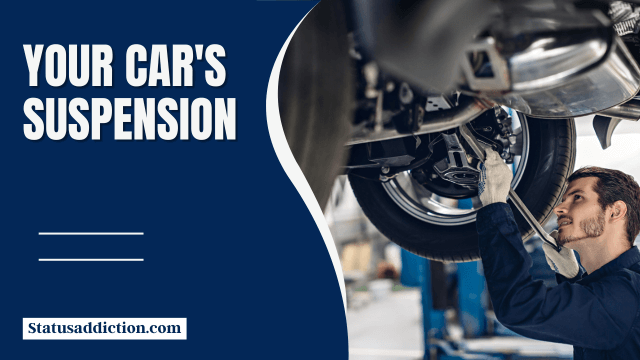Your Car’s Suspension, Driving a car with a bad suspension can be a bumpy and uncomfortable experience, not to mention potentially dangerous. Your car’s suspension plays a crucial role in providing a smooth ride, maintaining proper tire contact with the road, and ensuring your safety. In this comprehensive guide, we’ll walk you through everything you need to know about car suspension, how to identify problems, and what steps to take to address them.
Your car’s suspension system is an intricate network of components designed to provide a comfortable and safe driving experience. It absorbs shocks, reduces vibrations, and maintains proper contact between your tires and the road. Over time, however, the suspension can wear out, leading to a range of problems that can affect your vehicle’s performance and your overall driving experience.
Table of Contents
Understanding Car Suspension
What Is Car Suspension?
Car suspension refers to the system of springs, shock absorbers, and other components that work together to provide a smooth ride. It ensures that your tires maintain optimal contact with the road surface, allowing you to navigate corners, bumps, and uneven terrain without discomfort.
Related Post: How Long Can I Run My Car with Too Much Oil
Components of Car Suspension
The key components of a car’s suspension include:
- Springs: These absorb shocks and support the weight of the vehicle.
- Shock Absorbers (Shocks) and Struts: These dampen the impact of bumps and dips in the road.
- Control Arms: These connect the wheels to the chassis and allow for movement.
- Sway Bars: This help stabilizes the car during turns and minimizes body roll.
Signs of a Bad Suspension
Driving with a bad suspension can lead to a host of issues that affect both your car’s performance and your safety.
Uneven Tire Wear
Uneven tire wear is a clear indicator of suspension problems. If you notice that your tires are wearing out more on one side or in the center, it could be due to an imbalance in the suspension.
Excessive Bouncing
A bouncing or jarring sensation while driving, especially over bumps, can indicate that your shocks or struts are worn out and no longer effectively absorb shocks.
Drifting or Pulling
If your car tends to drift to one side or you feel like you’re constantly correcting the steering, it could be a sign of suspension issues or misalignment.
Diagnosing Suspension Issues
Visual Inspection
Perform a visual inspection of your car’s suspension components. Look for signs of damage, such as leaks, rust, or bent parts.
Road Test
Take your car for a test drive on different road surfaces. Pay attention to how it handles bumps, turns, and vibrations.
Professional Inspection
If you’re unsure about the state of your suspension, it’s best to have a professional mechanic inspect it. They can provide a more accurate assessment using specialized tools and knowledge.
Common Suspension Problems
Worn-out Shocks or Struts
Shocks and struts can wear out over time, leading to reduced shock absorption and a rougher ride.
Coil Spring Issues
Broken or worn-out coil springs can affect your car’s stability and lead to uneven tire wear.
Damaged Control Arms
Bent or damaged control arms can cause steering and suspension problems, affecting your ability to control the car.
Addressing Suspension Problems
Replacing Shocks or Struts
If your shocks or struts are worn out, replacing them can significantly improve ride comfort and handling.
Repairing or Replacing Coil Springs
Broken coil springs should be promptly replaced to prevent further suspension issues.
Fixing Control Arm Damage
Damaged control arms should be repaired or replaced to ensure proper wheel alignment and safe handling.
DIY Suspension Maintenance
Checking Tire Pressure
Regularly check and maintain the recommended tire pressure to prevent unnecessary stress on the suspension.
Regular Wheel Alignment
Proper wheel alignment prevents uneven tire wear and ensures stable handling.
Lubricating Bushings
Applying lubricant to suspension bushings can extend their lifespan and maintain smooth movement.
Professional Suspension Repair
Importance of Professional Help
For complex suspension issues, seeking help from a professional mechanic is crucial to ensure proper diagnosis and repair.
Choosing the Right Mechanic
Select a reputable and experienced mechanic with expertise in suspension systems for accurate and reliable repairs.
Preventing Suspension Issues
Safe Driving Habits
Avoid aggressive driving, sudden stops, and excessive speeding to reduce stress on the suspension.
Avoiding Potholes and Rough Roads
Whenever possible, steer clear of potholes and rough roads that can damage suspension components.
Conclusion
Your car’s suspension system is a vital part of its overall performance and your driving experience. Regular maintenance, prompt repairs, and safe driving habits can help extend the lifespan of your suspension and ensure a smoother, safer ride.

